ProgressMatch app removal from Mac is the only reasonable response to its unannounced installation and irritating browser redirects it causes incessantly.
Last fall, a new Mac adware lineage surfaced that seemed petty and no big deal. It introduced an app icon with a magnifying glass symbol in it, and the vanilla names of its knockoffs were impossible to memorize. Although it was spewing out several new samples a week on average, the overall impact was nowhere near mainstream browser infections haunting Macs at the time. Now in 2020, this is a full-blown family of potentially unwanted applications (PUAs) that blend different shady marketing schemes under the same umbrella. ProgressMatch is the latest one released in mid-May. It follows in the footsteps of its predecessors such as ProgressSite and SystemSpecial in terms of the distribution techniques, the malicious services it cross-promotes, and the persistence logic of the onslaught. The most prominent upshot of its sneaky infiltration is that the web browsers get out of hand, rerouting the Internet sessions to unwanted landing pages and showing sponsored materials where they don’t belong.

The invasive influence of ProgressMatch virus on a Mac entails an overlapping of several fraudulent vectors. One of them is that the victim’s default browsing settings undergo a dramatic change. For the record, the infection supports Safari, Google Chrome, and Firefox alike. It replaces the homepage and preferred search provider with a dodgy URL, typically featuring the a.akamaihd.net string prepended and concatenated with arbitrary characters. The common patterns include lkysearchds[random 4-5 digits]-a.akamaihd.net, search[random digits]-a.akamaihd.net, and default[random digits]-a.akamaihd.net. This is an infamous “dispatch” entity tasked with reorganizing Mac users’ traffic by forwarding it to dubious services such as Safe Finder. Therefore, the onset of ProgressMatch adware co-occurs with stubborn browser redirects leading to a fake search portal that harnesses Yahoo results instead of providing its own.
ProgressMatch may re-infect your Mac multiple times unless you delete all of its fragments, including hidden ones. Therefore, it is recommended to download Combo Cleaner and scan your system for these stubborn files. This way, you may reduce the cleanup time from hours to minutes.
Download Now Learn how Combo Cleaner works. If the utility spots malicious code, you will need to buy a license to get rid of it.Another annoying outcome of the attack is all about ads that appear all over the visited sites. This is classic aftermath of an adware incursion that piggybacks on unauthorized privileges the culprit gets in the web browser. Popups, coupons, freebies, interstitial advertisements, and in-text links on web pages will become the “norm” because ProgressMatch app authors’ coveted goal is to enhance their filthy practices with different shades of attack monetization. Moreover, the content reflected in these ads matches the victim’s current interests. This fact signals one more unsettling quirk of the virus: it collects personally identifiable data such as the Internet history and recent web searches. To add insult to injury, its browser extension named ProgressMatch 1.0 assumes permissions beyond this type of privacy infringement. It can additionally read passwords, credit card details, and phone numbers on all sites the infected user goes to.
The operators of this adware are making the most of software bundles that deliver the payload onto Macs surreptitiously. In other words, since the ProgressMatch app cannot possibly be on anybody’s wish list, people get it unwittingly when installing some unrelated product. The catch is that the installation client won’t unveil the true structure of the bundle unless the user customizes it, which is hardly ever the case. Recklessly clicking through the setup screens to complete the process faster is what the average Mac user does instead. This explains why ProgressMatch is an unexpected discovery in close to a 100% of cases. The next thing the person knows, a notification saying, “This process is completed. To finish, click OK” pops up and a magnifier-themed logo appears in the Dock out of the blue. Then, the infection starts holding sway over different facets of the victim’s web surfing activity as outlined above. When trying to fix the issue, Mac users may run into difficulties such as inability to spot all of its components across the system and a subsequent relapse of the attack. The steps below cover ProgressMatch removal techniques that get these hurdles out of the way.
ProgressMatch virus manual removal for Mac
The steps listed below will walk you through the removal of this malicious application. Be sure to follow the instructions in the specified order.
Expand the Go menu in your Mac’s Finder bar and select Utilities as shown below.
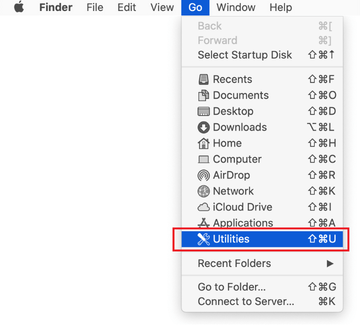
Locate the Activity Monitor icon on the Utilities screen and double-click on it.
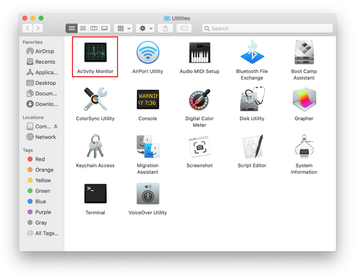
In the Activity Monitor app, look for ProgressMatch (ProgressMatch 1.0) or another process that appears suspicious. To narrow down your search, focus on unfamiliar resource-intensive entries on the list. Keep in mind that its name isn’t necessarily related to the way the threat is manifesting itself, so you’ll need to trust your own judgement. If you pinpoint the culprit, select it and click on the Stop icon in the upper left-hand corner of the screen.
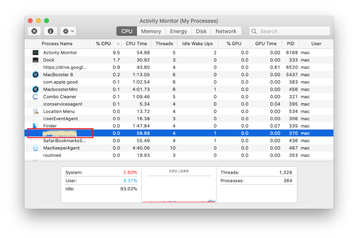
When a follow-up dialog pops up asking if you are sure you want to quit the troublemaking process, select the Force Quit option.
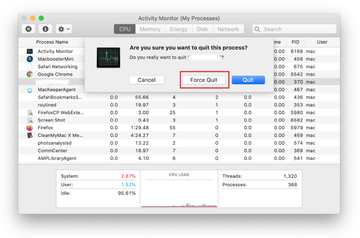
Click on the Go menu icon in the Finder again and select Go to Folder. You can as well use the Command-Shift-G keyboard shortcut.
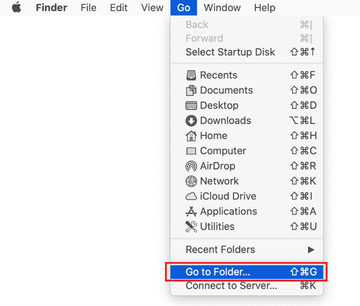
Type /Library/LaunchAgents in the folder search dialog and click on the Go button.
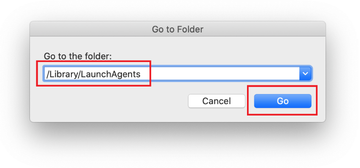
Examine the contents of the LaunchAgents folder for dubious-looking items. Be advised that the names of files spawned by malware may give no clear clues that they are malicious, so you should look for recently added entities that appear to deviate from the norm.
As an illustration, here are several examples of LaunchAgents related to mainstream Mac infections: com.pcv.hlpramc.plist, com.updater.mcy.plist, com.avickUpd.plist, and com.msp.agent.plist. If you spot files that don’t belong on the list, go ahead and drag them to the Trash.
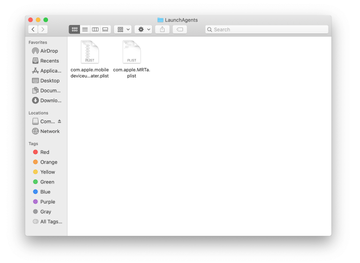
Use the Go to Folder lookup feature again to navigate to the folder named ~/Library/Application Support (note the tilde symbol prepended to the path).

When the Application Support directory is opened, identify recently generated suspicious folders in it and send them to the Trash. A quick tip is to look for items whose names have nothing to do with Apple products or apps you knowingly installed. A few examples of known-malicious folder names are ProgressMatch, ProgressSite and IdeaShared.
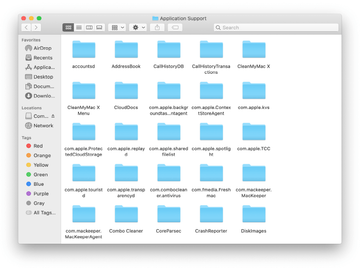
Enter ~/Library/LaunchAgents string (don’t forget to include the tilde character) in the Go to Folder search area.
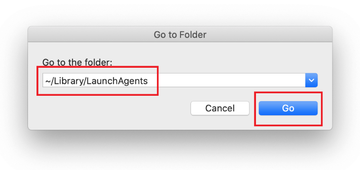
The system will display LaunchAgents residing in the current user’s Home directory. Look for dodgy items related to ProgressMatch virus (see logic highlighted in subsections above) and drag the suspects to the Trash.
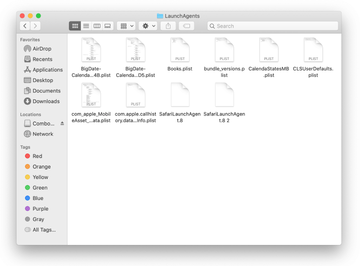
Type /Library/LaunchDaemons in the Go to Folder search field.
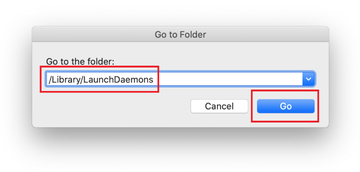
In the LaunchDaemons path, try to pinpoint the files the malware is using for persistence. Several examples of such items cropped by Mac infections are com.pplauncher.plist, com.startup.plist, and com.ExpertModuleSearchDaemon.plist. Delete the sketchy files immediately.
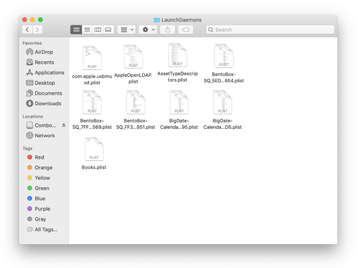
Click on the Go menu icon in your Mac’s Finder and select Applications on the list.
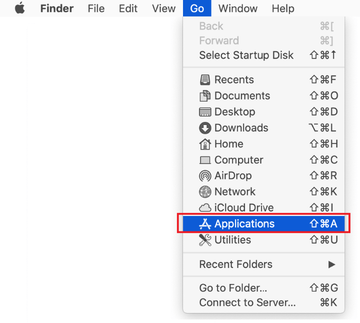
Find the entry for ProgressMatch (ProgressMatch 1.0) or another app that clearly doesn’t belong there and move it to the Trash. If this action requires your admin password for confirmation, go ahead and enter it.

Expand the Apple menu and select System Preferences.
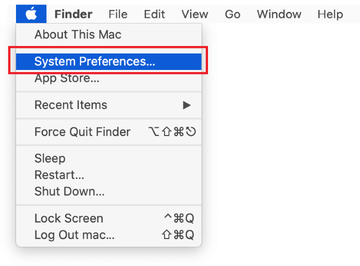
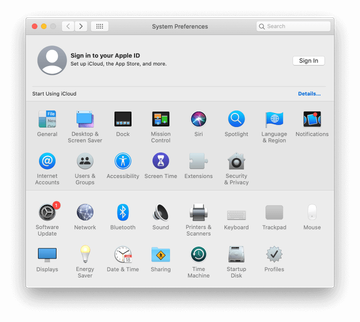
Proceed to Users & Groups and click on the Login Items tab.
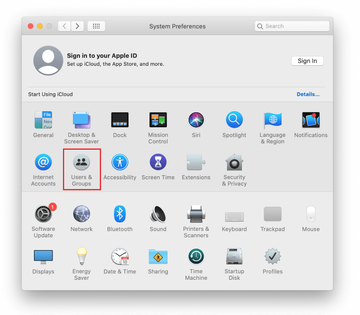
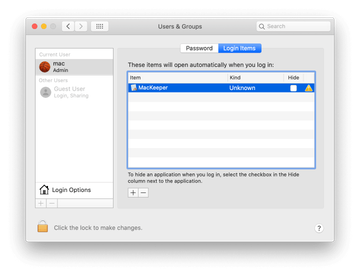
Now select Profiles under System Preferences. Look for a malicious item in the left-hand sidebar. Several examples of configuration profiles created by Mac adware include TechSignalSearch, MainSearchPlatform, AdminPrefs, and Chrome Settings. Select the offending entity and click on the minus sign at the bottom to eliminate it.
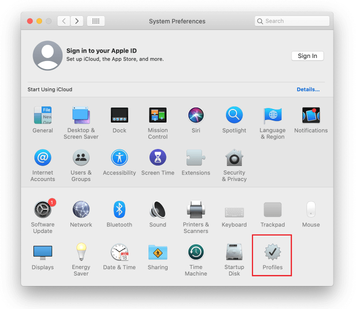
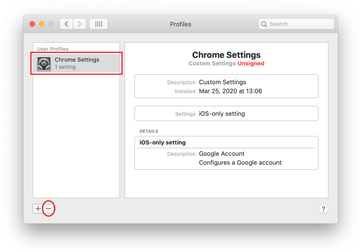
Get rid of ProgressMatch virus in web browser on Mac
To begin with, the web browser settings taken over by the ProgressMatch virus should be restored to their default values. Although this will clear most of your customizations, web surfing history, and all temporary data stored by websites, the malicious interference should be terminated likewise. The overview of the steps for completing this procedure is as follows:
- Remove ProgressMatch virus from Safari
Open the browser and go to Safari menu. Select Preferences in the drop-down list.
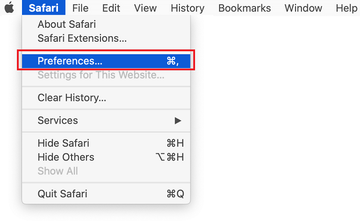
Once the Preferences screen appears, click on the Advanced tab and enable the option saying “Show Develop menu in menu bar”.
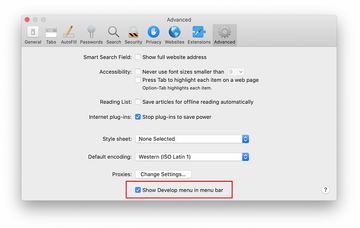
Now that the Develop entry has been added to the Safari menu, expand it and click on Empty Caches.
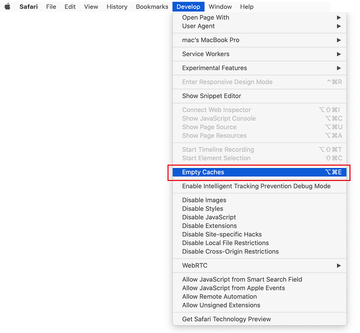
Now select History in the Safari menu and click on Clear History in the drop-down list.
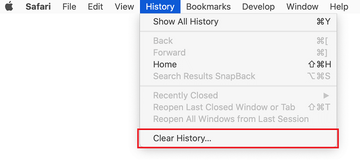
Safari will display a dialog asking you to specify the period of time this action will apply to. Select all history to ensure a maximum effect. Click on the Clear History button to confirm and exit.

Go back to the Safari Preferences and hit the Privacy tab at the top. Find the option that says Manage Website Data and click on it.

The browser will display a follow-up screen listing the websites that have stored data about your Internet activities. This dialog additionally includes a brief description of what the removal does: you may be logged out of some services and encounter other changes of website behavior after the procedure. If you’re okay with that, go ahead and click on the Remove All button.
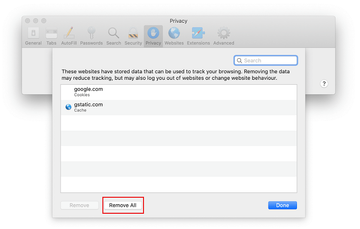
Restart Safari
- Remove ProgressMatch in Google Chrome
Open Chrome, click the Customize and control Google Chrome (⁝) icon in the top right-hand part of the window, and select Settings in the drop-down
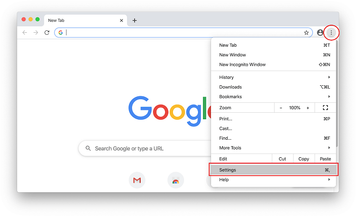
When on the Settings pane, select Advanced
Scroll down to the Reset settings section.
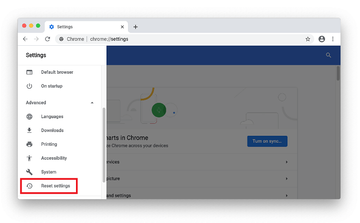
Confirm the Chrome reset on a dialog that will pop up. When the procedure is completed, relaunch the browser and check it for malware activity.
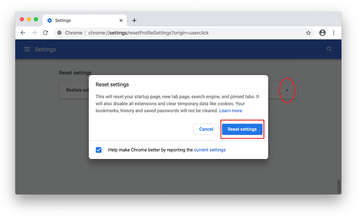
- Remove ProgressMatch from Mozilla Firefox
Open Firefox and go to Help – Troubleshooting Information (or type about:support in the URL bar and press Enter).
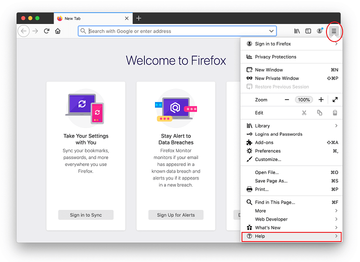
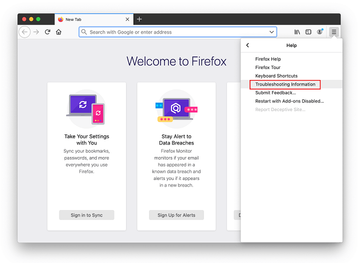
When on the Troubleshooting Information screen, click on the Refresh Firefox button.
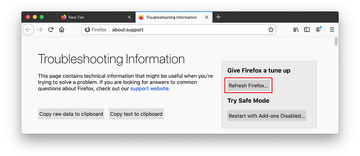
Confirm the intended changes and restart Firefox.
Get rid of ProgressMatch virus using Combo Cleaner removal tool
The Mac maintenance and security app called Combo Cleaner is a one-stop tool to detect and remove ProgressMatch virus. This technique has substantial benefits over manual cleanup, because the utility gets hourly virus definition updates and can accurately spot even the newest Mac infections.
Furthermore, the automatic solution will find the core files of the malware deep down the system structure, which might otherwise be a challenge to locate. Here’s a walkthrough to sort out the ProgressMatch issue using Combo Cleaner:
Download Combo Cleaner installer. When done, double-click the combocleaner.dmg file and follow the prompts to install the tool onto your Mac.
By downloading any applications recommended on this website you agree to our Terms and Conditions and Privacy Policy. The free scanner checks whether your Mac is infected. To get rid of malware, you need to purchase the Premium version of Combo Cleaner.
Open the app from your Launchpad and let it run an update of the malware signature database to make sure it can identify the latest threats.
Click the Start Combo Scan button to check your Mac for malicious activity as well as performance issues.
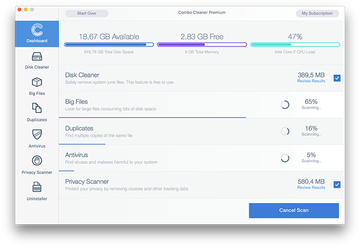
Examine the scan results. If the report says “No Threats”, then you are on the right track with the manual cleaning and can safely proceed to tidy up the web browser that may continue to act up due to the after-effects of the malware attack (see instructions above).
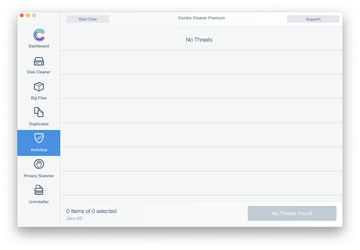
In case Combo Cleaner has detected malicious code, click the Remove Selected Items button and have the utility remove ProgressMatch threat along with any other viruses, PUPs (potentially unwanted programs), or junk files that don’t belong on your Mac.
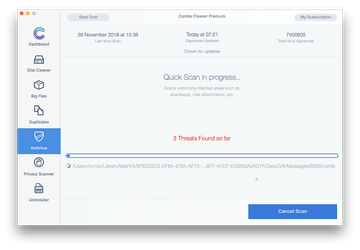
Once you have made doubly sure that the malicious app is uninstalled, the browser-level troubleshooting might still be on your to-do list. If your preferred browser is affected, resort to the previous section of this tutorial to revert to hassle-free web surfing.
